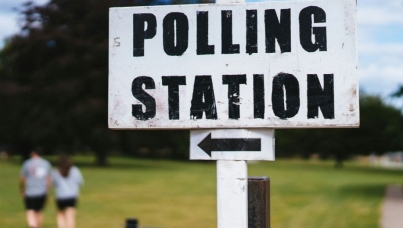Struggling for a winning message, Trump heads for defeat
 Even by the standards of the last four years, this week has been something of a dramatic one in American politics. Having contracted coronavirus and spent several days being treated in hospital, President Trump has re-emerged, urging Americans not to fear the virus and vowing to get back on the campaign trail. But as he does all is not well for the president’s campaign. Behind in the polls and struggling for a winning message, time is running out.
Even by the standards of the last four years, this week has been something of a dramatic one in American politics. Having contracted coronavirus and spent several days being treated in hospital, President Trump has re-emerged, urging Americans not to fear the virus and vowing to get back on the campaign trail. But as he does all is not well for the president’s campaign. Behind in the polls and struggling for a winning message, time is running out.
Back in 2016 things were much simpler for Trump. Despite being historically unpopular for a major party nominee, his average net favourability rating heading into the election was -21, Trump had a message. He was the outsider who would ‘drain the swamp’ in Washington. His promise to ‘Make America Great Again’ spoke to a nostalgia infused populism that appealed to many Americans. His opponent, who he branded ‘crooked Hillary’ Clinton, was unpopular, with an average net favourability rating of -13. For Trump, you could say, the stars aligned.
We know the rest. Despite losing the national popular vote, Trump won the presidency eking out a victory in the Electoral College that will go down as one of the greatest upset wins in US political history.
A different world
Fast forward four years and the question is can he do it again? Perhaps. But the world is very different now. Trump is the incumbent and things are not going the president’s way. His plans to run on ‘Keep America Great’ based on a booming economy, once a reasonably safe bet, now lay in tatters following the coronavirus outbreak.
More worryingly for the president, Americans take a dim view of his handling of the crisis itself. In a polling series for Reuters, our colleagues at Ipsos US find that a clear majority of Americans (57%) disapprove of Trump’s handling of the virus (42% strongly disapprove) and two-thirds (65%) think he would probably not have been infected himself if he had taken the virus more seriously. Given that the virus is now almost certain to be top of voters’ minds as they head to the polls, these are not good numbers for the president. He needs a response.
Trump also doesn’t have the luxury of running against a particularly unpopular opponent this time. His challenger Joe Biden enjoys far better favourability ratings than Hillary Clinton did four years ago or the president does now (Biden averages a net favourability rating of +4). The ‘sleepy Joe’ nickname given to Biden by Trump does not appear to be landing as well as ‘crooked Hillary’ did last time. Watching coverage of the campaign, you often get the feeling that Trump would much rather be running against the more leftist Vermont Senator Bernie Sanders or New York Congresswoman ‘AOC’ than the former Vice President. Finding an attack line that sticks on Biden has so far eluded him.
Trump is losing

Trump’s struggles are most clearly laid out when looking at the horse race numbers. At the time of writing, polling aggregators FiveThirtyEight have Biden leading the popular vote nationally by 9 points. Our colleagues at Ipsos US have his lead slightly larger at +12 points among likely voters. The numbers have typically been stable, regardless of events, but they have moved Biden’s way slightly this week. With Ipsos, Biden’s national lead was +9 points before the first presidential debate, +9 after the debate, +10 after Trump’s coronavirus diagnosis and +12 now. Trump’s approval rating remains stubbornly underwater too, with a clear majority of Americans (53%) disapproving of the job he is doing as president and no sign of this improving as election day nears.
Of course, the more astute observers of American elections will point out that the president can win re-election losing the national popular vote if he wins the states that matter – as he did last time. However, although the race is somewhat closer in these states, the numbers do not look good for the president here either. For example, recent Ipsos polling showed Trump behind by 5 points in Pennsylvania, 6 in Wisconsin and 8 points in Michigan, states critical to his re-election chances. If anything, such deficits may grow as the national polls move against Trump this week. Regardless, if Biden were to win the national popular vote by 9 points, as per current polling averages, the electoral map would somewhat take care of itself anyway.
In short, with less than four weeks to go, President Trump needs to find a message that changes the dynamic of this race – and fast. Right now, it appears to be slipping away from him. Of course, if the past week has taught us anything, the old adage that ‘a week is a long time in politics’ still holds. Things can change and if Trump can cut his average 9-point deficit nationally in half (or by more) then things get more interesting. However, with the polls stubbornly against him, seemingly few undecided voters left to win over, and some votes already cast, time is running out for Trump to turn things around.
Keiran Pedley is Director of Politics at Ipsos and tweets about polls at public opinion in the UK and US at @keiranpedley.




